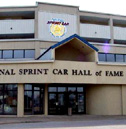 |

Comment
on this story
Seven Days
Wednesday, March 24
• A bill that would have outlawed same-sex civil unions is defeated. Republican lawmakers complain that Democrats “stacked” the House subcommittee that buried the bill. Loosely translated, that means they appointed too many representatives smart enough to vote against it.
Thursday, March 25
• A woman with a suitcase full of pipe bombs robs the Citizens National Bank on Highway 66 in Sevierville. Local police redouble their investigative efforts when they learn she made her getaway in a Krispy Kreme doughnut truck.
Friday, March 26
• The good news: The Associated Press announces that Tennessee is ranked no. 1 again. The bad news: The category is “number of methamphetamine laboratories decommissioned annually.”
Saturday, March 27
• Quoting a local physics professor, a News Sentinel story announces that the planets are in alignment this weekend. The rest of the news, however, shows widespread misalignment of most everything terrestrial.
Sunday, March 28
• The list of candidates seeking to become the next president of the University of Tennessee is up to 30, says a report in the daily paper. It neglects to mention that several of the resumes on file are just locals in the market for a new gas grill and a home entertainment system.
Monday, March 29
• A proposed law to legalize charity gambling goes to a state legislative conference committee so legislators can settle disagreements over its content. The delay disappoints lawmakers who thought the bill’s ratification would be a cakewalk.
Knoxville Found

What is this? Every week in “Knoxville Found,” we’ll print the photo of a local curiosity. If you’re the first person to correctly identify this oddity, you’ll win a special prize plucked from the desk of the editor (keep in mind that the editor hasn’t cleaned his desk in five years). E-mail your guesses, or send ’em to “Knoxville Found” c/o Metro Pulse, 505 Market St., Suite 300, Knoxville, TN 37902.
Last Week’s Photo:
Before there were state-of-the-art burglar alarm systems with bright red laser beams to protect our diamond collections, there were boxes on the side of buildings that housed sirens to alert of criminal activity. The alarm pictured is affixed to the Fidelity Building on the Union Avenue side in our very own downtown. Because no one was savvy enough to pinpoint the location of this security dinosaur, we’ll have to hold on the 2004 Limited Edition Land Rover that we had intended on giving away for another time.
|
Stonewalled
KCDC reluctant to save Austin Homes
A few months ago, some residents of Austin Homes off Summit Hill were upset that KCDC wanted to tear down their homes.
So the group challenged KCDC’s demolition application, a document they picked through to find a number of errors. They found an architect and two structural engineers to back them up, started looking for financing, and dreaming about owning the buildings themselves, managing them as a housing cooperative.
The residents seem to be working toward every part of KCDC’s mission statement, which is: “To improve neighborhoods and communities by: Providing quality affordable housing; advancing development initiatives, fostering self-sufficiency.” But the housing authority has been steadfast in its desire to raze the 23 brick buildings, which include 150 units.
In KCDC’s demolition permit filed last June, it argued that the older section of Austin Homes (the newer section is not scheduled for demolition) is obsolete and would be too expensive to renovate. It estimated it would cost more than $18 million to renovate the structures.
The residents—working with the grassroots group Solutions—found an architect who came up with a much cheaper estimate of $6 million. Architect Ben Garlington says he was asked to determine whether the buildings are obsolete.
“It’s a preliminary estimate, so I don’t want to stand up and say it can be renovated for that price,” he says. “But we proved they weren’t obsolete [by HUD’s criteria].”
“One of the claims to support demolition was that the foundations were not solid and that the buildings were collapsing into sink holes. We got some of the old architectural drawings and had structural engineers take a look at the foundations and certified that they were not sinking,” Garlington says.
Garlington says he’d like more time to look at possibilities for the property. There’s a very similar housing project in Chattanooga that’s been renovated. He also says the buildings are valuable for their architecture.
“They were built during a time when public architecture seemed like it was meant to inspire,” he says.
Sarhonda Thompson, treasurer of the Austin Homes Tenants Association, has bold ideas for the property. The idea is to turn the housing project—both the old and new sections—into a housing co-op. There are different ways they can be set up, but essentially the residents become part owners and they establish a management structure.
They’d also like to start a business on site, creating jeans and other apparel, a sort of mini-Levi’s.
“I love this area, and I’d like to live here for a long time. It’s perfect for me, especially when I’m going to go into graduate school,” Thompson says.
It bothers her that the residents’ ideas seem to be so quickly dismissed. “Some of the people on our executive committee, they’re not that educated. They’re working on their GEDs. But that’s the point—it’s about empowerment,” she says.
Bill Owen of Asset & Equity says the idea is not farfetched. Similar things have been done in other areas.
“A lot of people who live in public housing, they might have jobs and be able to pay some rent, but they don’t have enough money to get started, to pay the closing costs. There are programs that help out with this,” he adds. “Whether the people of Austin Homes qualify or whether it’s the right thing to do is too early to say.”
“In the grand scheme of things, we’re not talking about a whole lot of money [needed to buy and renovate the units]. It’s a lot to me. But when you’re talking about trillion dollar housing markets, it’s not a whole lot of money. There’s certainly money available for a decent deal,” Owen says.
The residents’ hopes were damped somewhat when HUD approved KCDC’s demolition request. Now Austin Homes Residents Association is trying to preserve the buildings on grounds that they’re historically important. They presented their case to Knoxville City Council last month.
“Politicians by and large don’t want to get in the middle of things,” says Councilman Bob Becker. “This one is especially hard because there really isn’t anything we can do.”
When asked about the residents’ efforts, Billie Spicuzza, KCDC’s vice president of housing, said only four residents are opposed to the demolition. When asked if the residents presented a viable plan for using them would KCDC consider selling them, she said: “We believe those buildings are not in good condition to maintain. We think it’d be not a wise use of money. We don’t believe it’d be a sound investment for them or us.”
Becker says he doesn’t think KCDC is acting with a heavy hand. “For the most part KCDC has been above board and tried to get people involved,” he says. KCDC hopes to have the residents relocated by August. If all goes as planned, demolition would begin in September. There are no plans for the property, other than some landscaping.
Thompson is hopeful the buildings can still be saved, but the process has left one resident dejected.
“We proved our case. And it was pointless....We had local HUD passing us notes telling us, ‘It looks good, you’ve got a chance.’ But it just didn’t matter. I’m very bitter over this whole thing,” Elisanne Mead says. “It’s hard to keep fighting once you’ve been turned down totally. For all that we’ve learned and all that we’ve done, it didn’t matter to anybody in charge. I think that’s what hurts the most.”
—Joe Tarr
Dry Springs
South Knoxers oppose beer
A potential savior for the Marble Springs Park on the estate of John Sevier, Tennessee’s first governor, may have been doomed from the outset. The park operates on a partial state budget that provides it with 20 percent of its expenses, requiring board members to generate the remainder. The park’s executive director, Bob Reich, approached local events promoter Aaron Snukals with the prospect of holding concerts on the lawn to raise funds, but he reached a slight impasse when the question of alcohol arose. The idea met with the disapproval of County Commissioner Larry Clark, and zoning came into question.
Marble Springs would stand to earn a profit from beer sales, and Reich doesn’t feel that the concert series would be successful without the availability of adult beverages. “I met with a group of citizens that said that they probably wouldn’t come to the show without beer,” Reich says. “And these people aren’t drunks; they just want to have a beer under the stars.”
The shows will go on with or without beer. “If you go to Thompson-Boling Arena, there’s no alcohol there,” Snukals says. “We’ve talked about doing shows six or seven days a year, [benefiting] the park the other days in the year that it will be open. If we don’t get approval... people will just bring in their bottles or whatever.”
According to Clark, Knox County Law Director Mike Moyers raised some unanswered questions at the most recent beer board meeting. One stumbling block is that Marble Springs is state property, but the park’s board of directors is not a state entity.
“There is a historical overlay on the property, but no one knows what the zoning is. I believe that it is agricultural and residential, but we don’t know if zoning codes even matter on state property,” Clark says.
The response Clark says he has received from his constituents about beer sales in the park has been of overwhelming disapproval.
The first concert is scheduled for April 23 with guitarist Johnny Lang as its headline performer. “Anytime you do something out there people get angry. We feel like we’re walking on ice, but we’ll do the best we can no matter what happens,” Snukals says. “We’re going to do this show no matter what.”
—Clint Casey

April 1, 2004 • Vol. 14, No. 14
© 2004 Metro Pulse
|
|